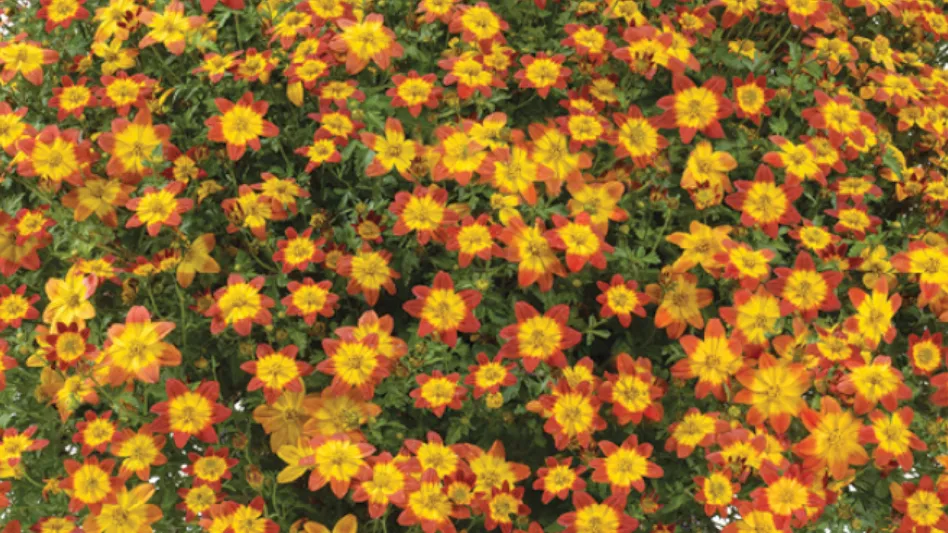
Watcherfox: Adobe Stock
Thirteen years ago, the U.S. Senate designated a week in June as "National Pollinator Week" to address the decreasing pollinator populations. Now internationally recognized, it has grown into a celebration that is acknowledged by all environment lovers. This year's Pollinator Week is June 22-28, and experts share their updates and advice to assist with the continued protection of the ecosystem's most valuable creatures.
How are pollinator numbers in the U.S. and Canada?
While this is great information to know, it’s difficult to answer. Honeybees and monarch butterflies have the most data, meaning, there is less data on other pollinators. According to Victoria Wojcik, the science and research director and Canadian program director for Pollinator Partnership, there are about 3,000 bee species in the U.S. and over 800 in Canada. Wojcik also says that even though other pollinators may not have as much data as honeybees and monarch butterflies, there is just enough historic presence and absence information that helps researchers know their status.
What are the most endangered pollinators right now?
“In terms of the most endangered, or those that are likely facing patterns of extinction, B. affinis [Bombus affinis or rusty patched bumblebee] and B. franklinii [Bombus franklini or Franklin's bumblebee] fit the bill,” Wojcik says. This also goes for pollinators with little to no data on their survival challenges, she says.
What legislation is in the works regarding pollinators?
“The rusty patch bumblebee has experienced declines and is the first bumblebee species to receive protections under the U.S. Endangered Species Act,” says Mary Phillips, senior director of the National Wildlife Federation’s Garden for Wildlife program. The 46-year-old program encourages gardeners to nurture plants that benefit butterflies, bees and other pollinators.
The endangered bee species list was finalized in 2017, but the U.S. Fish and Wildlife Service delayed the monarch butterfly’s endangered species listing until December 15, 2020. While they are not yet endangered, their status is a key pointer in determining the standing of different types of pollinators.
“Certain iconic species like the monarch butterfly, while not a super effective pollinator, is a keystone species whose 90% decline over the last 20 years is a representative of the stressors all pollinators are facing,” Phillips says.
As for other pollinators, the 2018 Farm Bill — legislation that aims to create a more sustainable farm and food system that passed with bipartisan support in Congress— increases funding from the Environmental Quality Incentives Program allocated to wildlife habitats from a 5% minimum to a 10% minimum of total EQIP funds. Therefore, the amount of money available for farmers and ranchers to create habitats for species like the greater sage grouse and monarch butterflies has increased, Phillips says.
Wojcik says that each state is supposed to have a Pollinator Protection Plan (P3), and nearly all do, although they vary in quality. There are also states looking at new initiatives, like Fresh Energy — an independent, nonprofit organization in Minnesota that’s working towards a clean energy economy — that’s taking steps to develop pollinator planting in solar arrays. Minnesota lawmakers have also greenlighted a new program to pay state homeowners who transform their lawn into bee gardens — specifically attractive to the rusty patched bumblebee — by reportedly allocating $900,0000 annually to participating homeowners.
How can garden centers support pollinators and educate their customers?
“The ideal pollinator habitat support is planting locally native plants and refraining from the use of pesticides,” Wojcik says, “as well as encouraging customers to plant good sources of pollen and nectar for bees and other pollinators that flower throughout the bloom season.” Along with this, Phillips says that creating pollinator-friendly displays of native and non-invasive nectar-providing annuals is helpful, as well as partnering with local pollinator experts and hosting fun, community events. Garden centers can also support pollinators by stocking native plants —preferably plants that are free from pretreatment with pesticides — which can be found in the Pollinator’s Partnership’s Ecoregional Planting Guide.
Are organizations working on any new initiatives?
Although not new, the Million Pollinator Garden Challenge (MPGC) is a nationwide call to action to preserve and create gardens and landscapes that help revive bees, butterflies, bird, bats and additional pollinators across America. It was founded by nine partnering organizations, including Garden for Wildlife and Pollinator Partnership. The challenge asks people to plant for three-season of bloom to ensure nectar for pollinators.
How can you create a pollinator-friendly environment?
- Designate a pollinator garden separate from your landscape
Flower nectar and pollen are important to pollinators. Create a section of your garden that is filled with grasses, wildflowers, trees and shrubs. Using an area that receives at least six hours of sunlight is advised. If space is an issue, planting pollinator garden plants in containers filled with well-drained soil is an alternative.
- Find pollinators that are specific to your region Some pollinators are dependent on specific plants to thrive and reproduce. By researching native pollinators in your area, replicating their habitat elements will be easier. To welcome a variety of pollinators, present a wide range of flower shapes and sizes to meet the needs of different feeding preferences. Offering different flower colors and fragrances is helpful.
- Provide resting/nesting spots
Pollinators need shelter to rear their young and protect themselves against predators. By providing wild grasses and decomposing logs, insects will colonize in your garden area. Standing dead trees also create nooks for butterflies, just like nesting blocks for solitary bees.
- Eliminate pesticide use
Pesticides rid unwanted pests and insecticides remove unwanted insects. Unfortunately, they also eliminate pollinating creatures, but taking preventive measures will avoid this. Having plants that are disease and pest resistant can reduce pest activity. If pest activity is detected, burying the infested plant reduces other pest activity that may follow.
Rethink raking fall leaves Autumn leaves or “leaf litter” act as nurseries by providing homes to a variety of insects and invertebrates — like butterflies who use them to lay eggs. Removing leaves can result in the removal of next year’s new butterflies and moths.
For more information
- Attract bees and butterflies with these specific flowers.
Sunset Magazine offers home, cooking, gardening and travel advice, with a primary focus on the Western United States.
- Use these safe, bee-friendly pesticides that may already be in your pantry.
Garden Collage Magazine covers plants, food, florals, travels, design, environmental activism, botanical medicine and more.
- Take steps to save the monarch butterfly with these 8 tips.
Greenpeace is an independent campaigning organization that promotes solutions to global environmental problems.
- Learn about pollinators other than bees and butterflies.
ThoughtCo is an educational website that answers questions on topics ranging from science, history, religion and current issues.
- Learn how agroforestry can help save pollinators.
The USDA National Agroforestry Center conducts research, develop technologies, coordinates training and provides information for national resource professionals.
Latest from Produce Grower
- DENSO and Certhon introduce Artemy, a fully automated cherry truss tomato harvesting robot
- Landmark Plastic celebrates 40 years
- CropLife applauds introduction of Miscellaneous Tariff Bill
- UF/IFAS researchers work to make beer hops a Florida crop
- Nature's Miracle announces initial shipments of "MiracleTainer" series container farm
- Local Bounti opens new high-tech controlled environment agriculture facility in Pasco, Washington
- NatureSweet responds after ruling by U.S. Court of International Trade that invalidates tax on tomato imports from Mexico
- Former Danone executive becomes chief operating officer at NatureSweet





